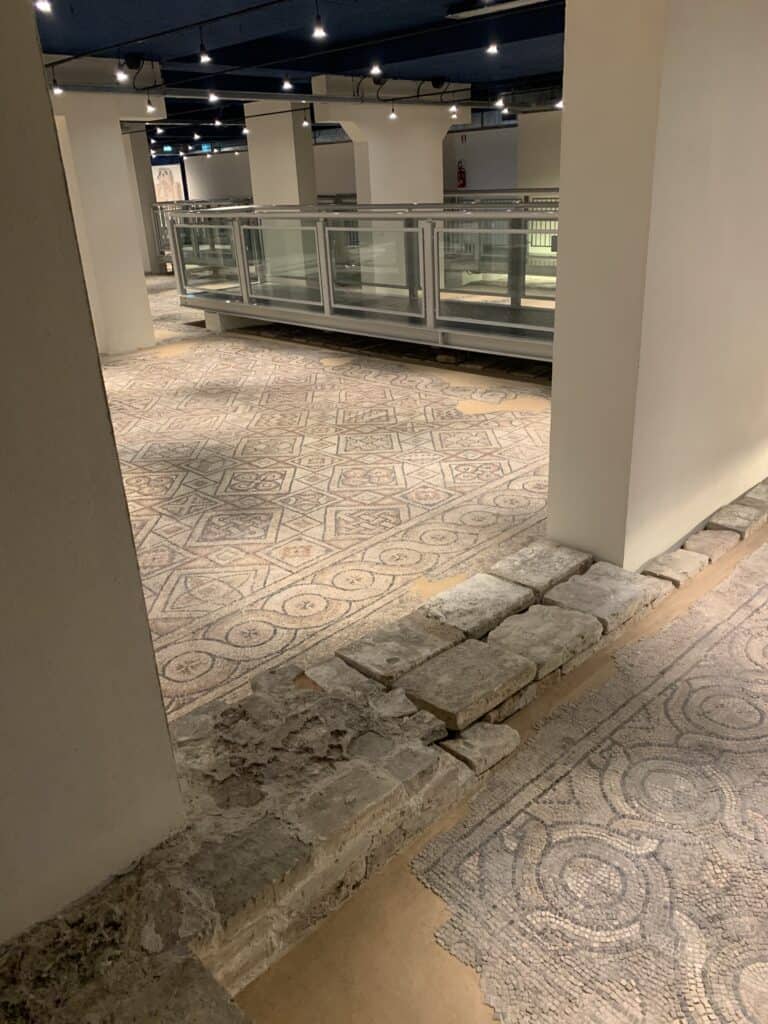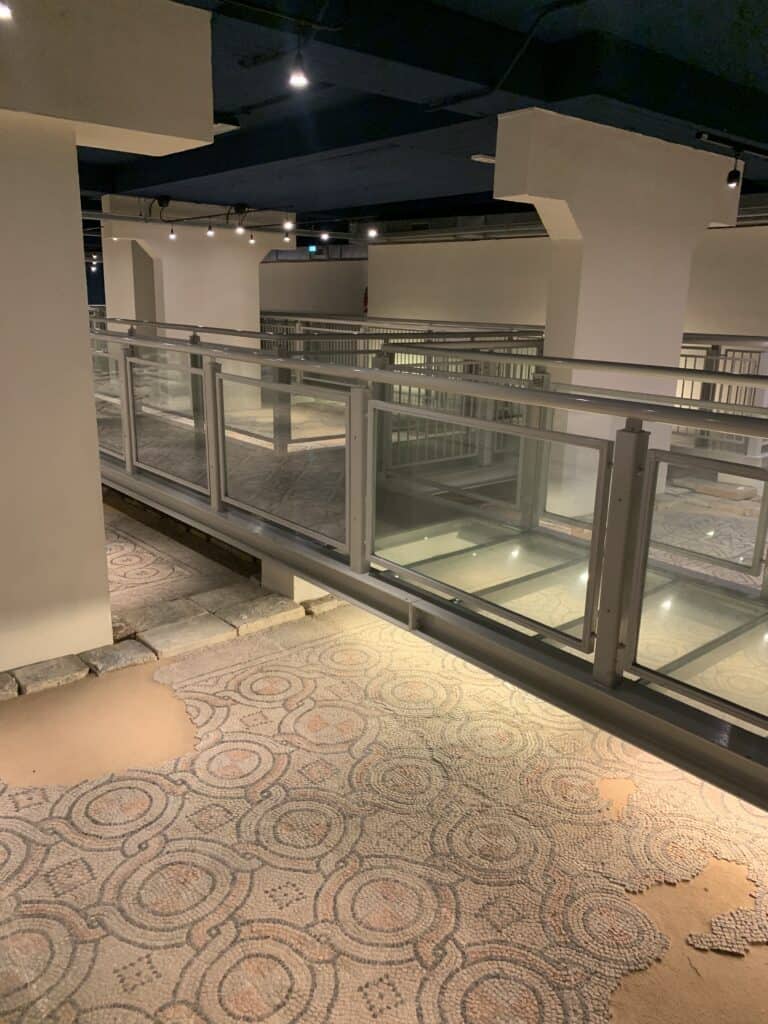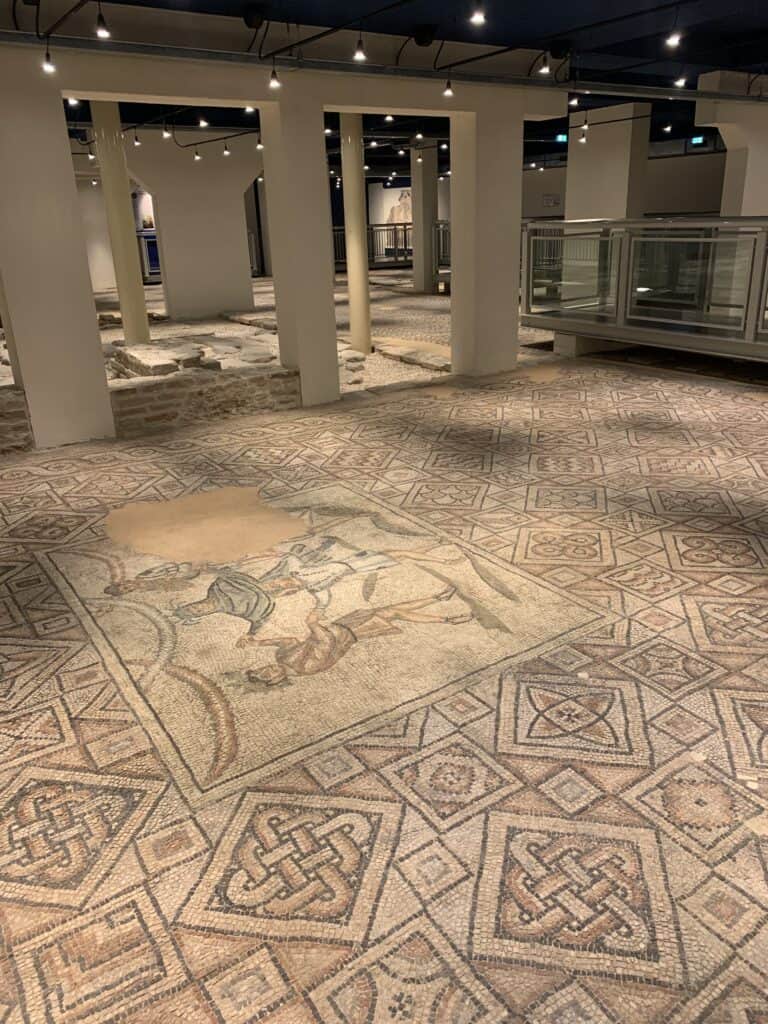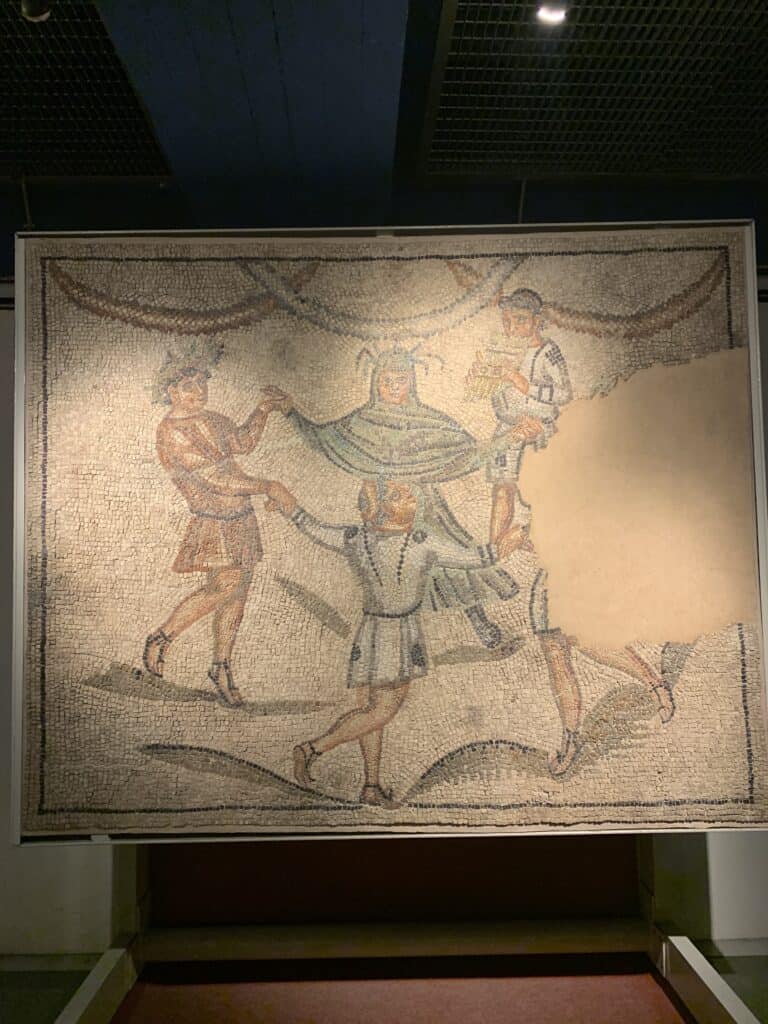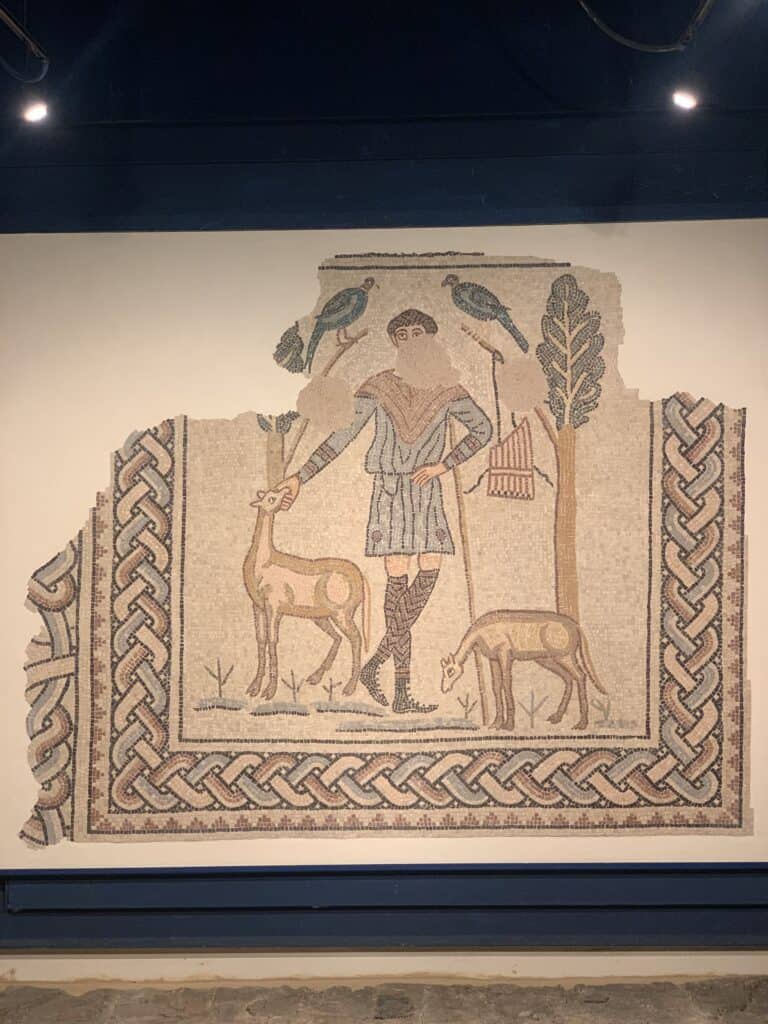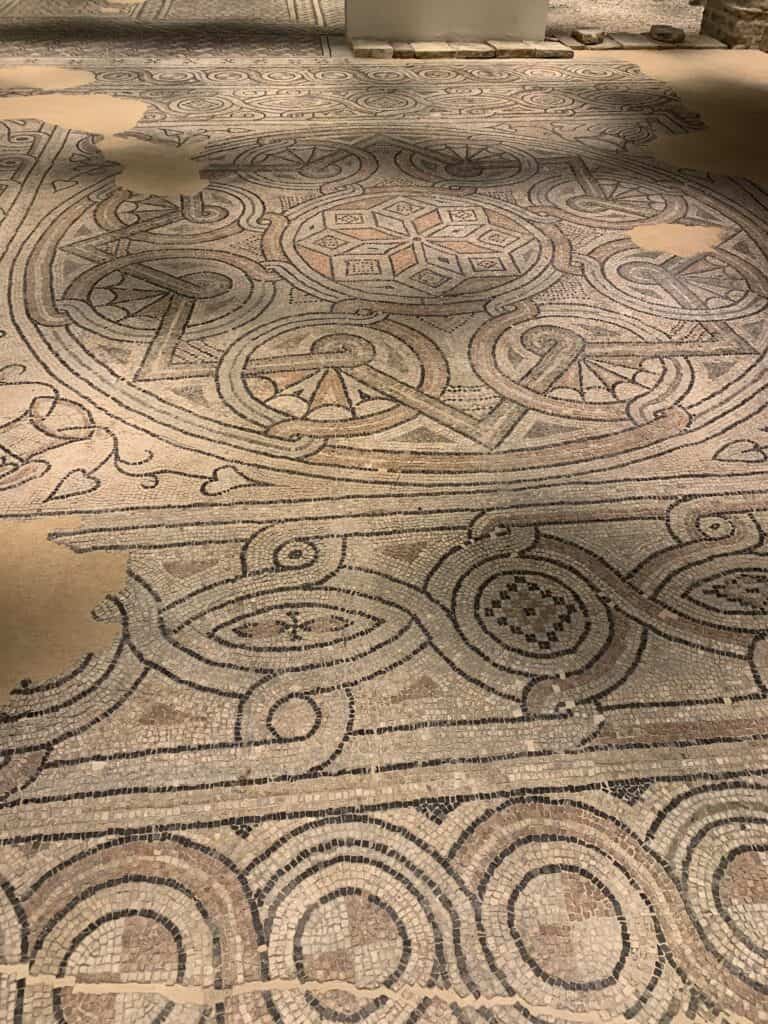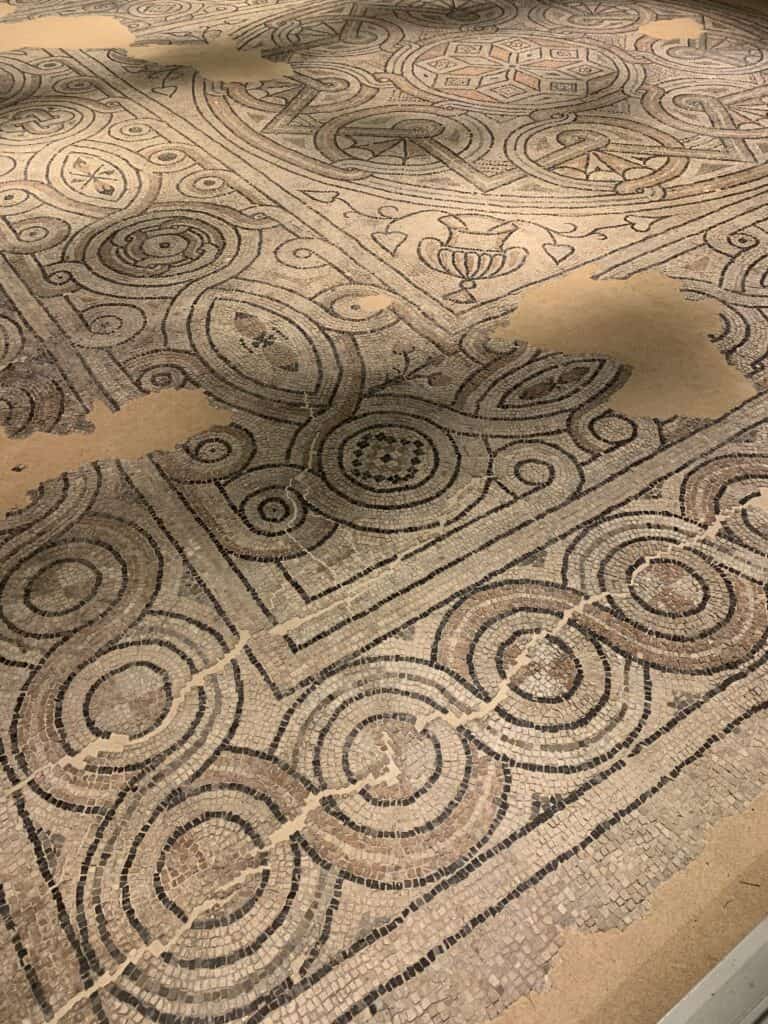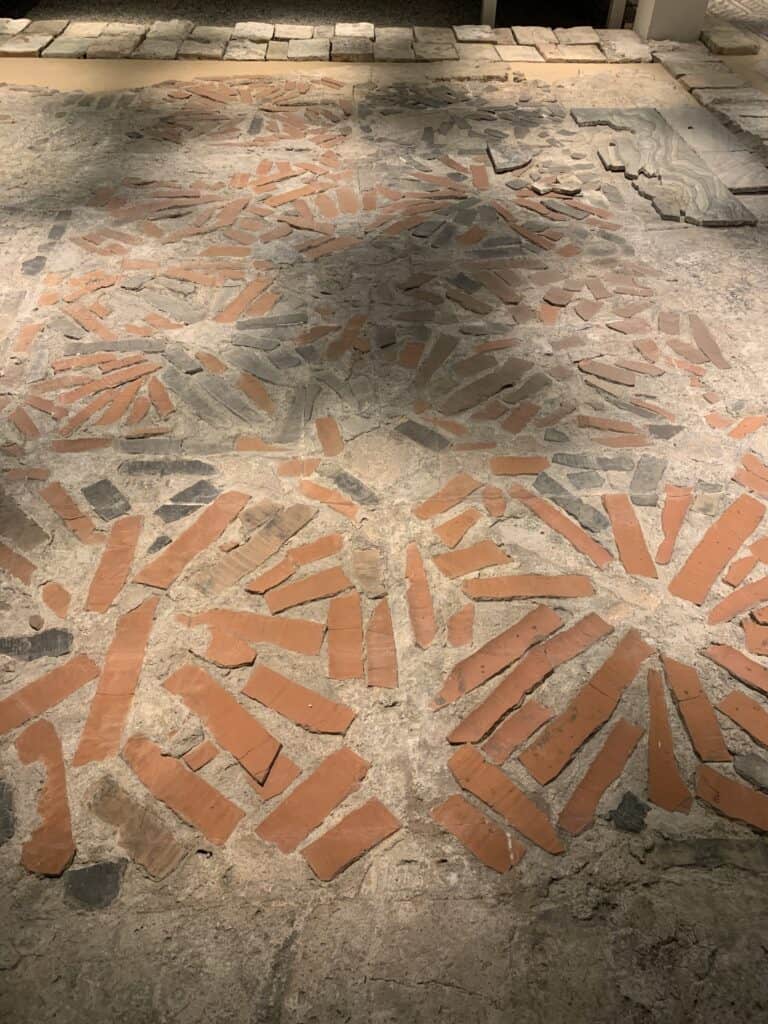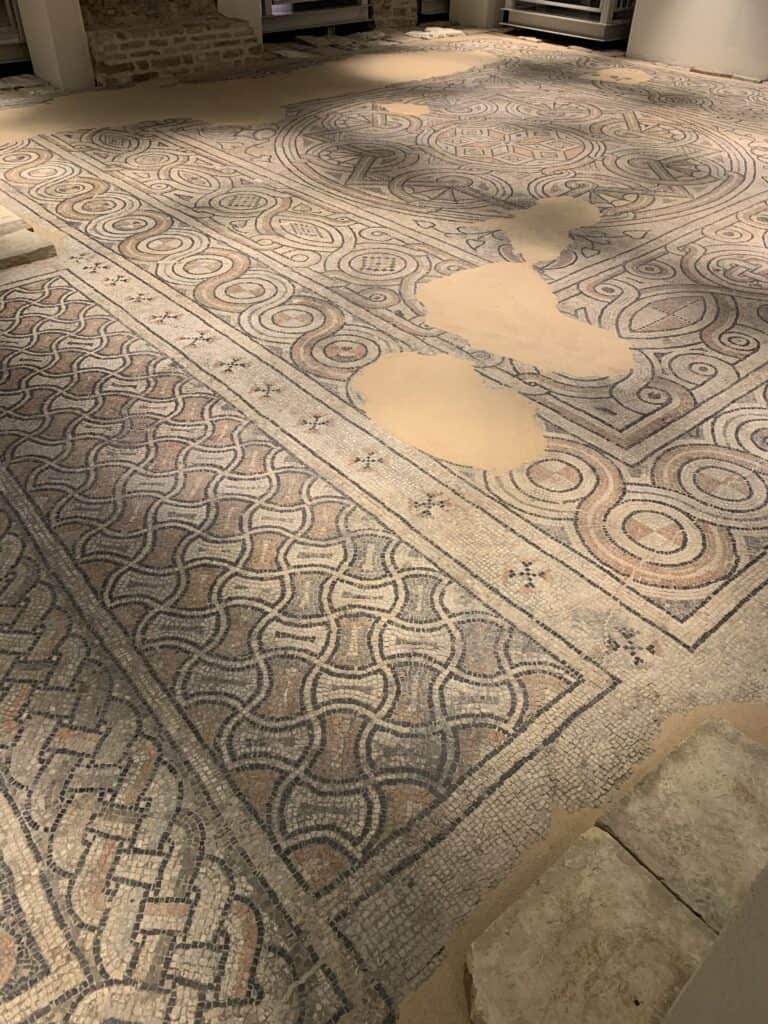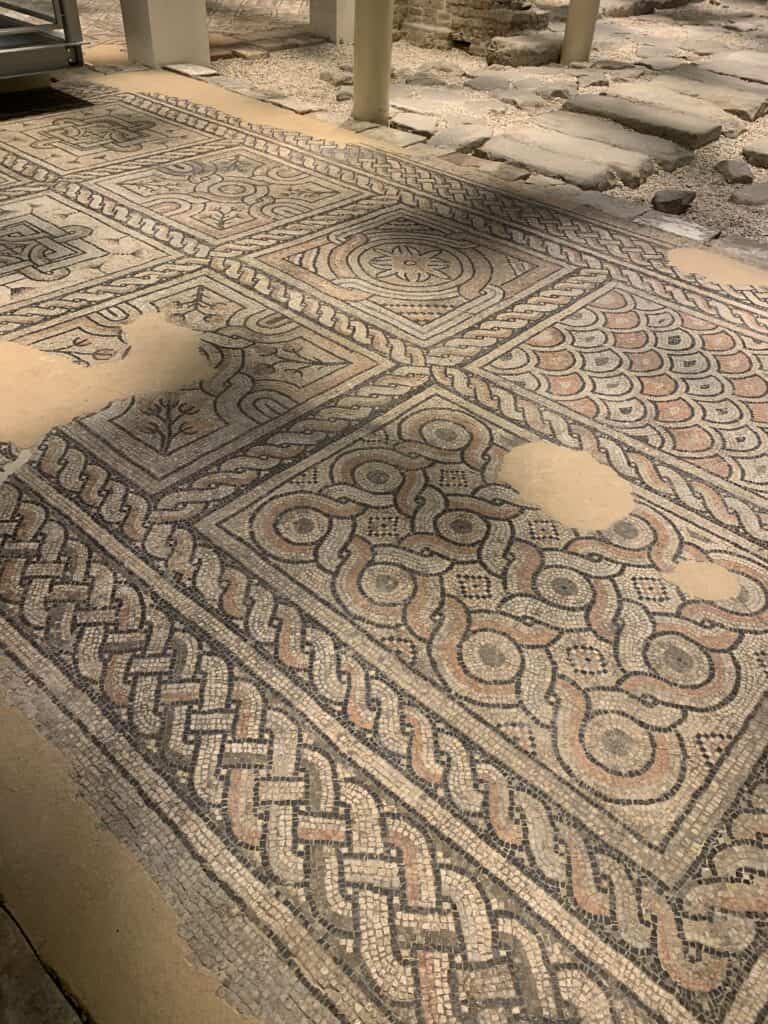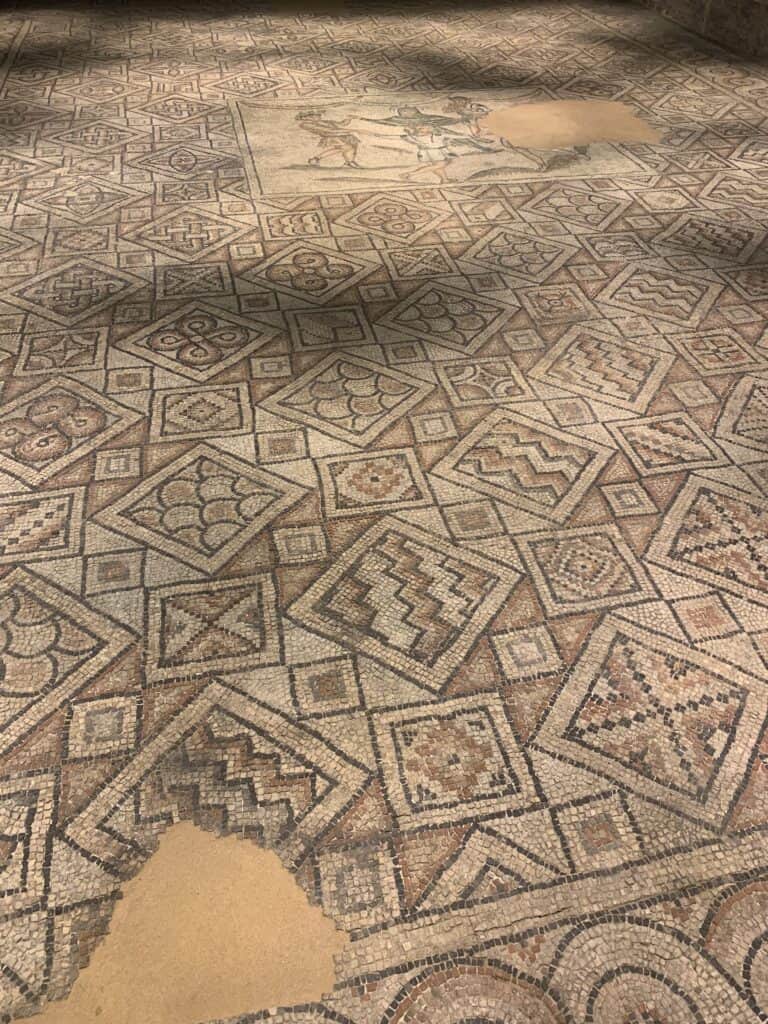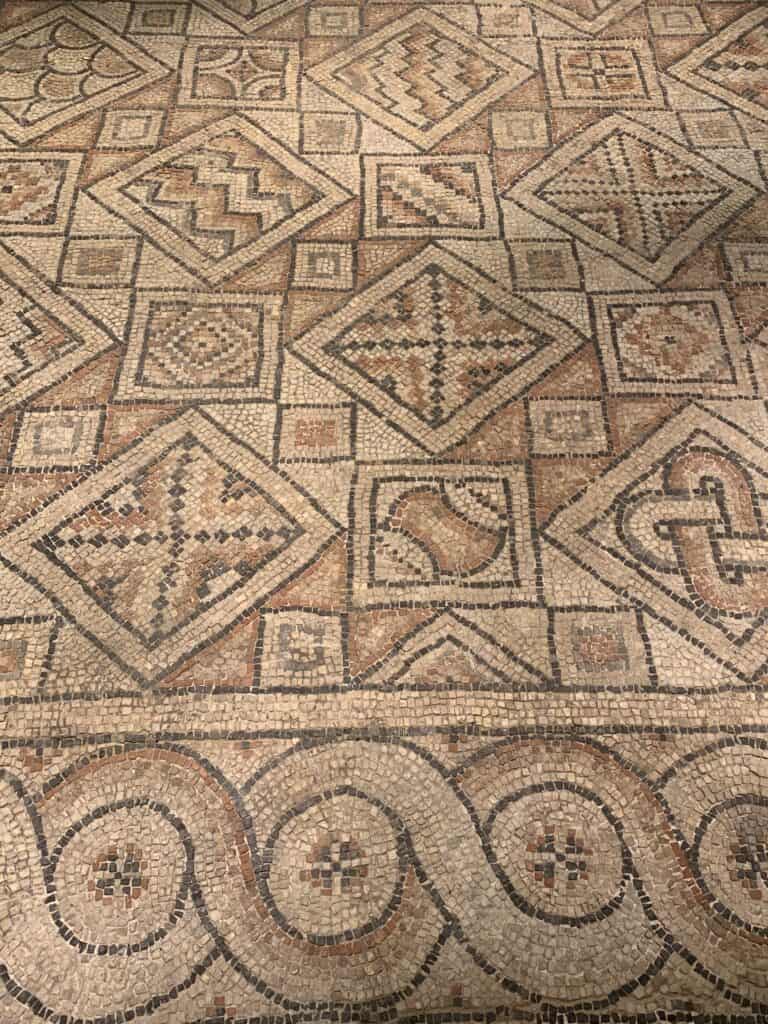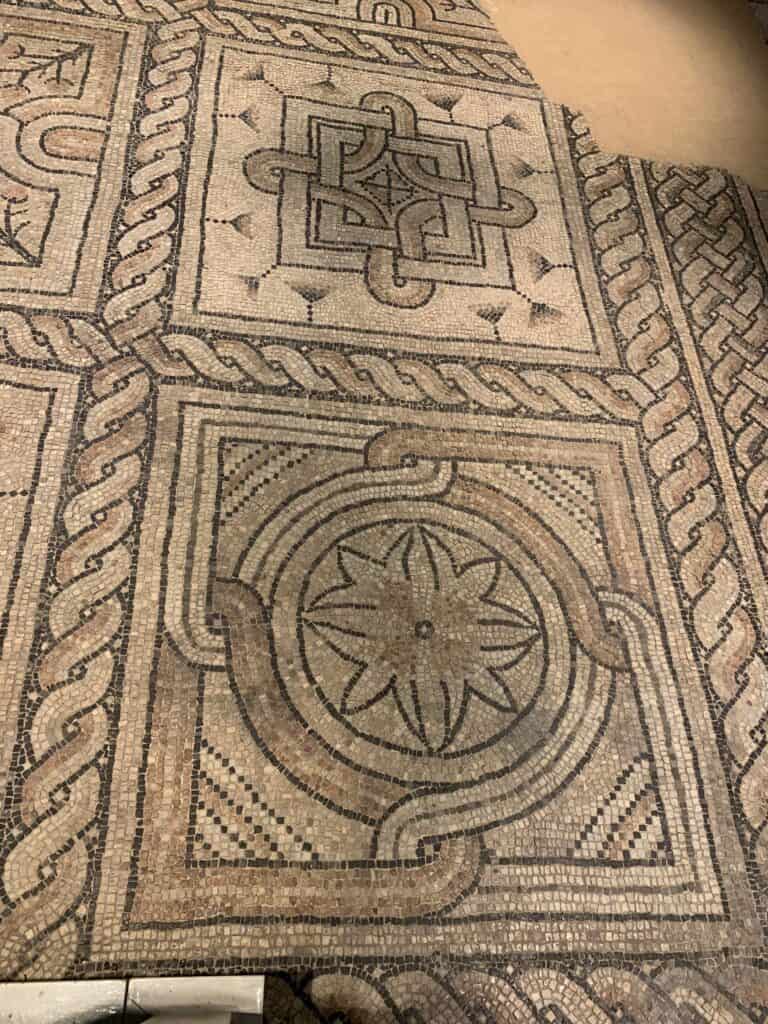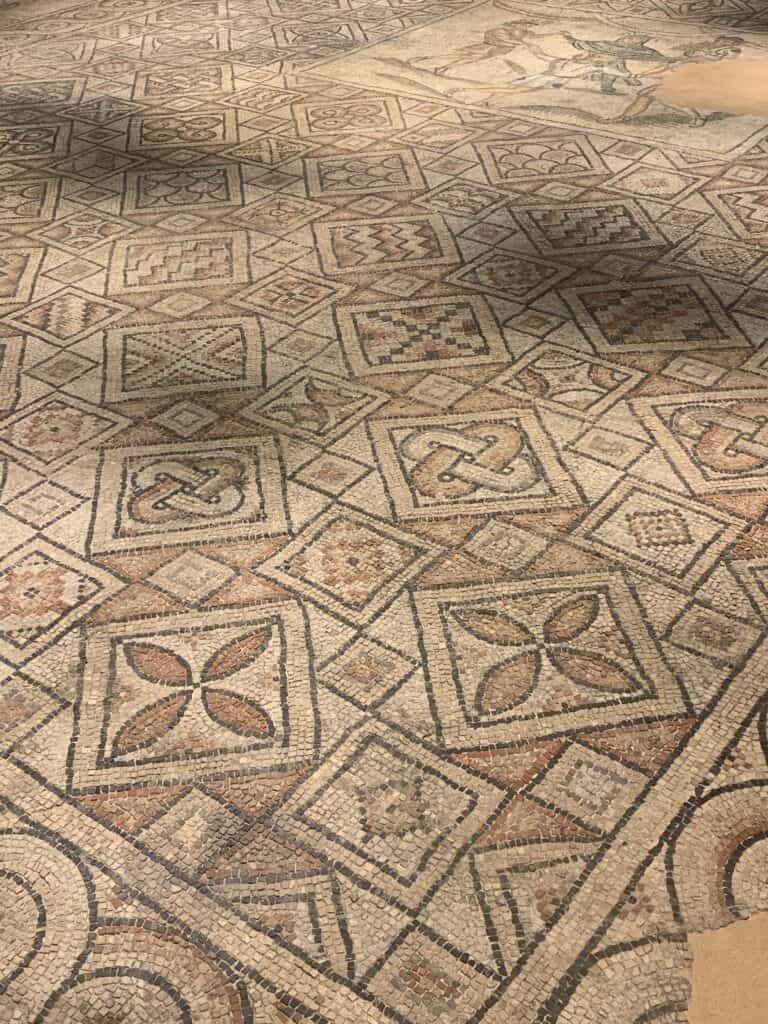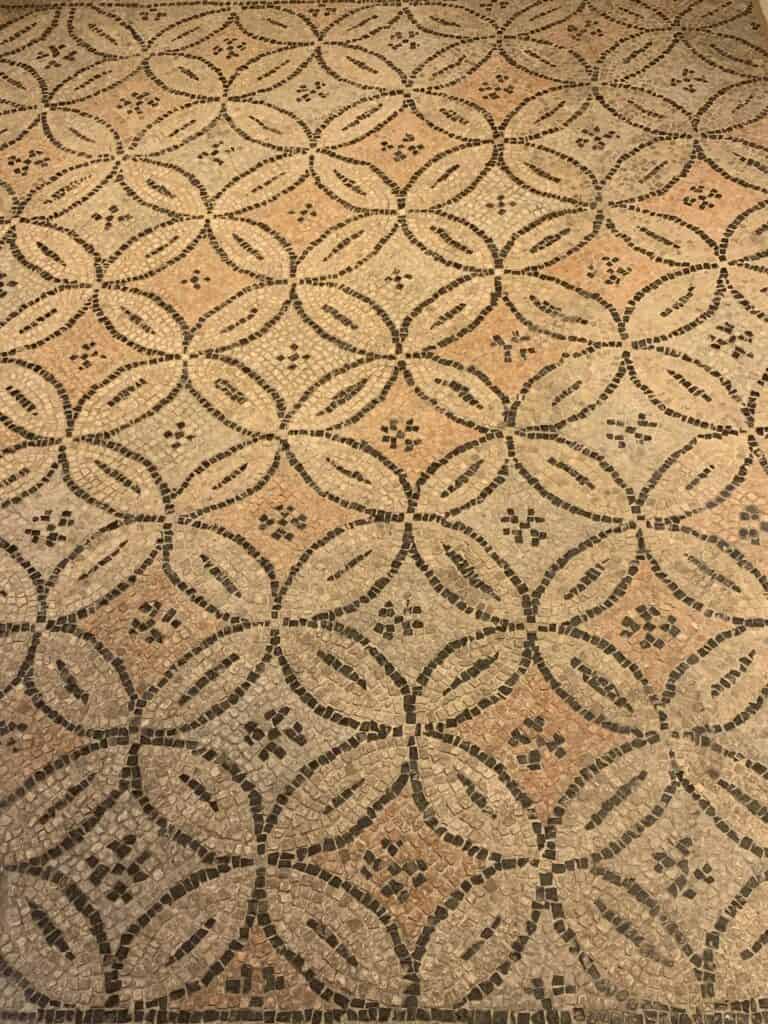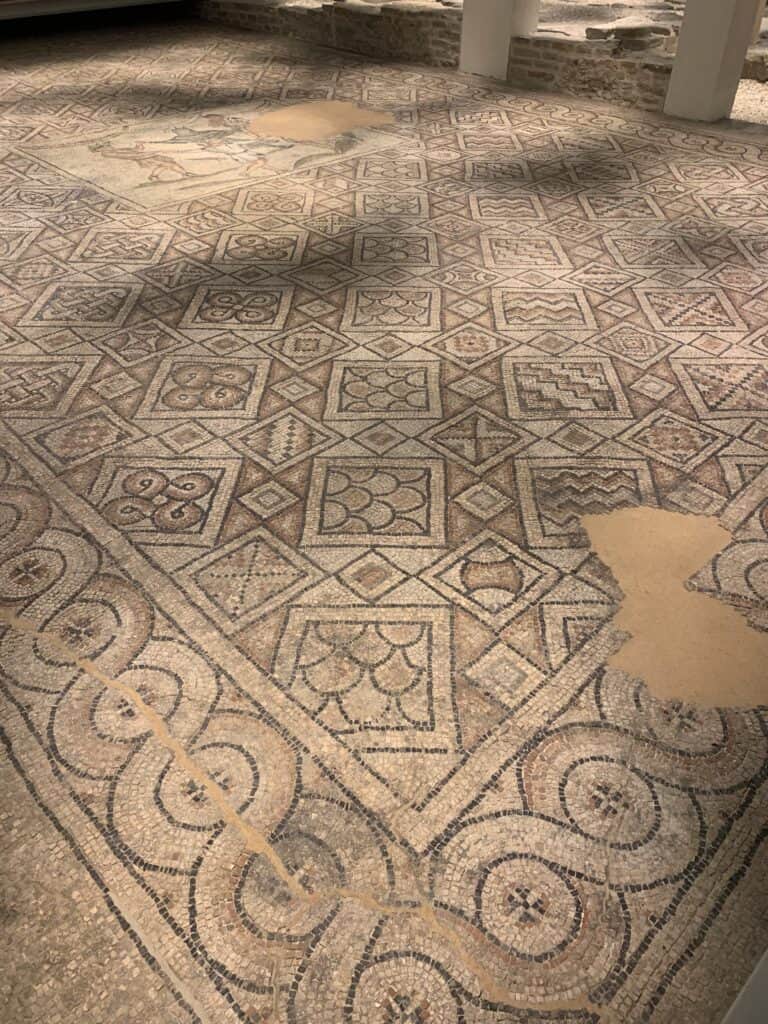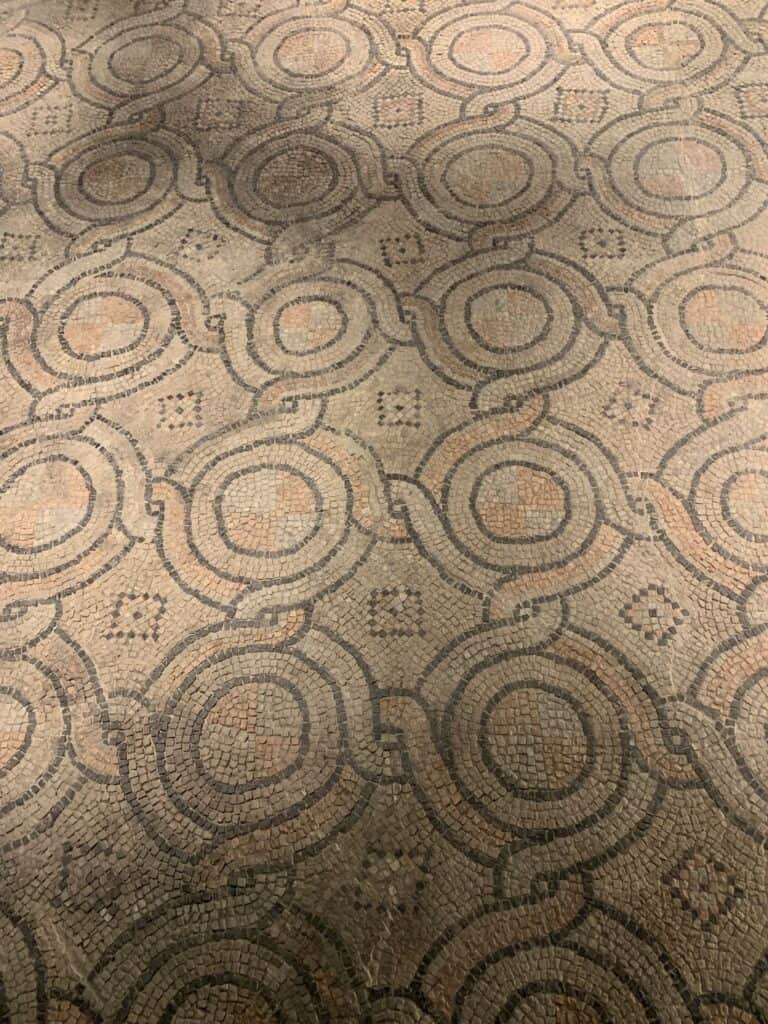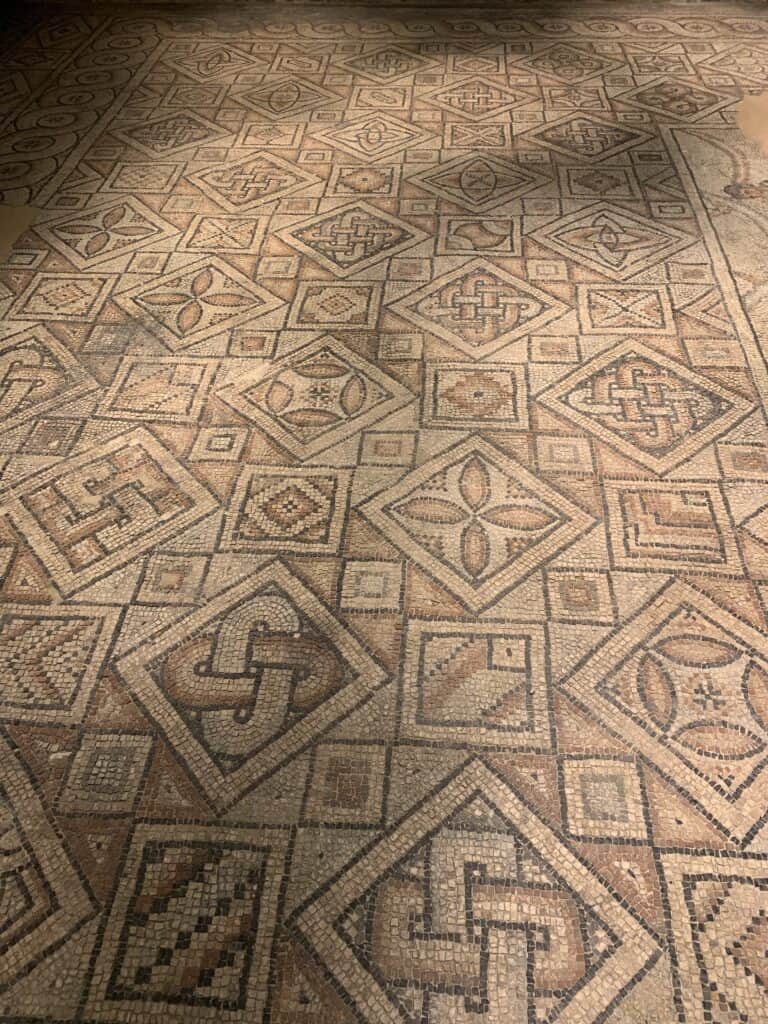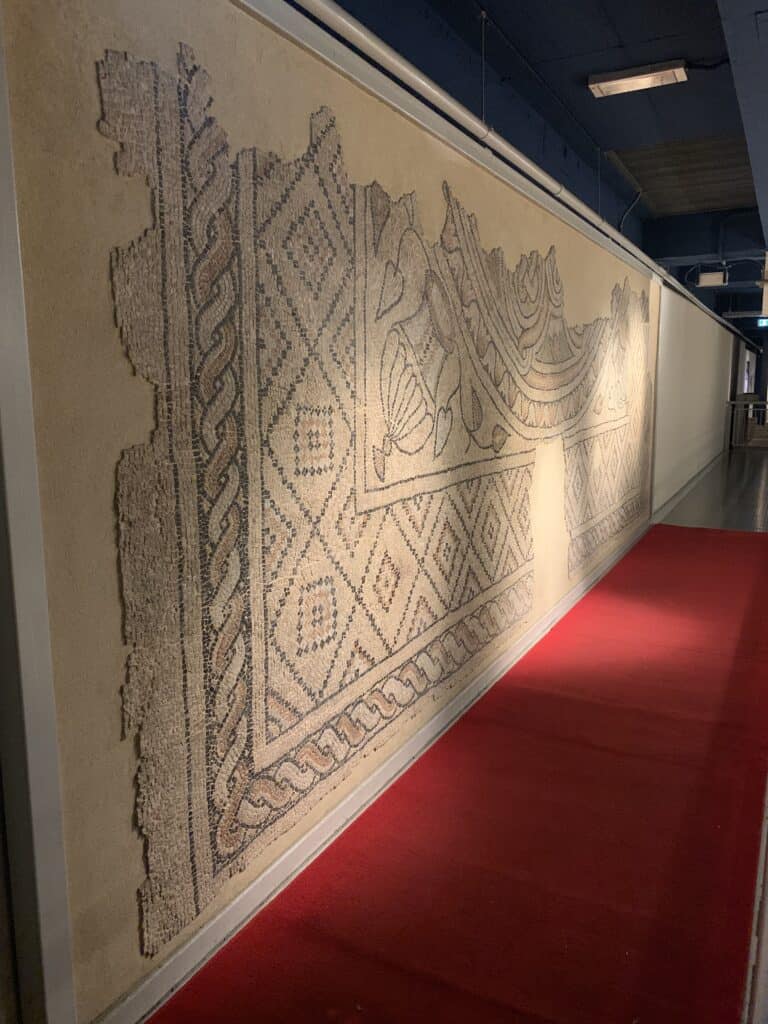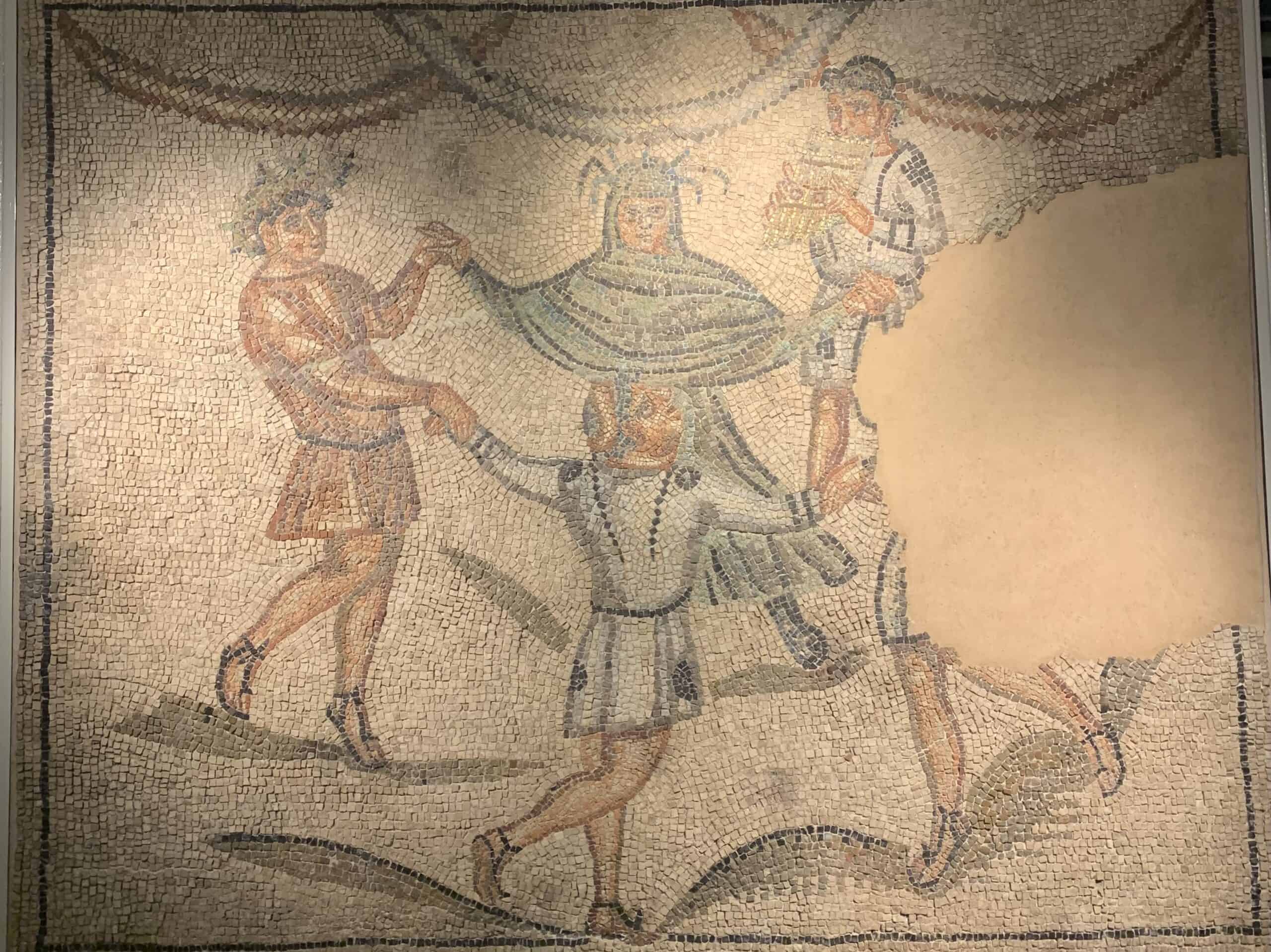
Near the Basilica of San Vitale is the Domus of the Stone Carpets, considered one of the most important Italian archaeological sites discovered in recent decades.
Between 1993 and 1994 the Superintendence for Archaeological Heritage of Emilia Romagna, interrupting the works for the construction of an underground car park, brought to light near D’Azeglio street a complex of building structures dating from the Roman Republican age and the Byzantine period.
Located inside the eighteenth-century Church of Santa Eufemia, in a vast underground environment located about 3 meters below street level, it consists of 14 rooms paved with polychrome mosaics and marbles belonging to a private Byzantine building of the V-VI century.
Renamed “Domus of the Stone Carpets” by the critic Federico Zeri, the area has a complex of residential houses dating from the first and sixth centuries enriched by marble floors and mosaic.
During the excavation phases several periods have been identified, however, it was decided to make the Byzantine layer, of the sixth century, visitable, as it was considered of greater interest.
Elevated walkways allow you to walk around the entire perimeter of the archaeological site and admire the floor mosaics up close.
Of particular interest and beauty are the mosaics decorated with geometric, floral and figurative elements considered unique.
The most important mosaics of the Domus are the “Dance of the Geniuses of the Four Seasons” of the fourth century, a very rare representation that shows the Geniuses dancing in a circle and the mosaic of the “Good Shepherd”, portrayed in a different version from the usual Christian representation.
I thank the Fondazione Parco Archeologico di Classe – RavennAntica for its hospitality and availability.

